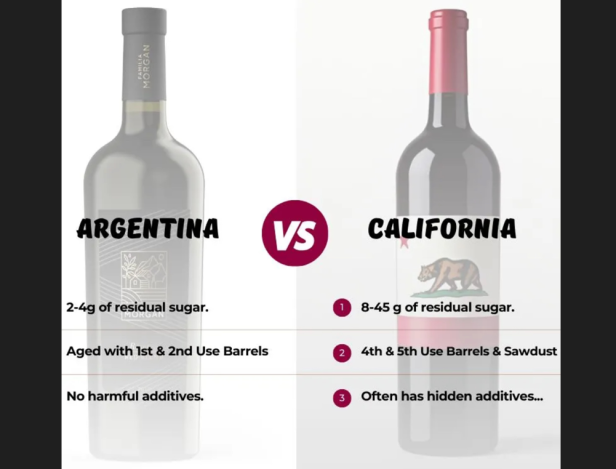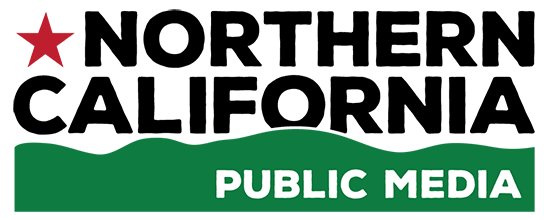 photo credit: KRCB News
photo credit: KRCB NewsA screenshot of an Instagram ad that appeared in KRCB News Director Greta Mart's feed in early February.
There’s a saying in the wine business that great wines are made in the vineyard. But are they really?
For the last few years, ads on social media have been telling consumers that there’s a lot more than just grapes in the average bottle of California wine.
The website for the TTB — that’s the federal agency that regulates alcohol — lists over 60 substances authorized for use in winemaking. It includes things like albumen and sulfur dioxide — plus a bunch of scientific-sounding materials most people can’t pronounce.
Regulators say wines made with those additives are generally safe to drink. But do winemakers really need all that stuff?
“Wine grapes want to be wine, but wine wants to be vinegar,” says Bryan Avila, an enology instructor at Santa Rosa Junior College. “So, at some point in between, the winemaker has to intervene, no matter what.”
How much intervention to use, he says, is up to the winemaker. While it’s certainly possible to make wine using only grapes and yeast, sometimes nature needs a little help. That’s where winemaking additives and processing aids come in.
One of the most common, Avila says, is sulfur dioxide. It’s a natural preservative that helps keep bacteria from turning the wine into vinegar.
In warm places like California, winemakers often add tartaric acid — which comes from grapes — to keep their wines in balance. “It comes in a bag,” says Avila. “You can add acid to make up for some of the acidity that went away during ripening.”
Some winemaking materials stay in the wine and become part of its chemistry, while others — like the egg whites some winemakers use to get rid of bitter compounds — are removed before bottling.
As for all that other scary-sounding stuff? Avila says many of those tools are used by wineries that are trying to fix a problem or achieve a certain profile.
“If you've got some Pinot Noir and it's light and it's delicate and it's fruity,” he says, “and you want it to be this big tannic beastie thing you can have with a cigar, that's going to take a lot of work.”
Rather than fiddling around in the cellar, Avila says, most winemakers would rather focus on the grapes.
That includes Adam Lee, the founder of Clarice Wine Company in Windsor. He says he has nothing against additives, but he does think there should be more transparency about who’s using what — especially when it comes to sugar.
Last year, Lee caused a stir with a Facebook post comparing the sugar content of his Dial Tone Pinot Noir with that of a popular large brand. The video showed a bottle of Meiomi next to multiple bottles of his wine — and pointed out that it would take 32 bottles of Dial Tone to equal the same amount of sugar in a single bottle of the other brand’s wine.
Lee didn’t find this out by comparing numbers on the labels — because wineries aren’t required to list information like ingredients or sugar content. He had the wines tested in a lab.
Wineries aren’t technically allowed to add sugar in sunny California. But it is legal to add grape concentrates like Mega Purple.
“It is grape juice that has been concentrated down,” Lee explains. “It has a large amount of sugar in it, but it's also very dark, very heavy.”
The idea, Lee says, is to create a sweeter product with Coca-Cola-like consistency. And there’s nothing wrong with that — as long as shoppers know what they’re buying.
It’s not necessarily that producers are trying to hide what’s in their wines, he says. It’s really more of a cost issue. Because wine varies with each vintage, producers would need to create new back labels every year and pay for new government approvals. And that can be expensive.
“My thing that I would hope for would be that we move towards something along the lines of a QR code on the back label,” he says, “so that could be scanned by the consumer and the consumer is taken immediately to the winery's website. And then that number, all of those numbers, are there transparently.
The TTB is currently reviewing a proposal to require wineries to include nutrition facts on their labels. But until that’s decided, Lee says the best way to avoid additives is to support smaller wineries — and ask a lot of questions.

 Live Radio
Live Radio




